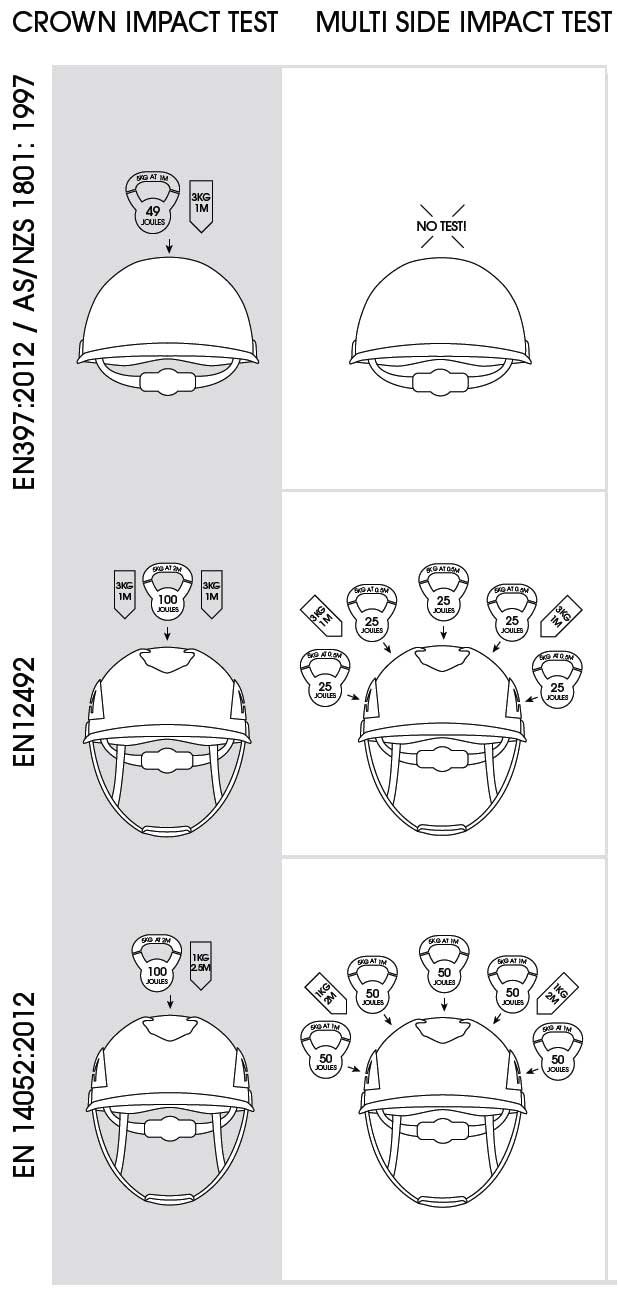- Contactless Click & Collect
- Fast Shipping
- 100% NZ Owned & Operated
- Bulk Buying Discounts
Understanding Multi-Impact Helmet Standards
Are you adequately protected? Many helmets for industrial use are only designed and intended to protect the head from falling objects. For work at height, it is essential that in the event of an uncontrolled fall the helmet is retained on the head and can take multiple impacts. Select a helmet with the impact and penetration testing standards most appropriate to your work activities.
Ground Level Industrial Hard Hat
EN397:2012 and AS/NZS 1801: 1997
Testing is only carried out to the top of the helmet. A 49J impact only to the crown of the helmet measures the shock absorption and a penetration test with a 3kg conical striker from 1 m. There is no side impact test in this standard- only a lateral rigidity test, which is a slow, progressive force loading, and is not an impact test. EN 397 requires a chinstrap which is designed to release under load with a force of 150N< F 500N.
Climbing/Mountaineers & Height Safety Helmets
EN12492
A helmet complying to the mountaineering standard must be approved by the manufacturer for industrial use. Impact tested with two 5kg strikers: a hemispherical striker is dropped from 2m onto the crown of the helmet and a flat striker from 500mm on to the front, rear & side by tilting the headform to 30°. In all cases, the transmitted force through the neck of the headform must not exceed 10kN. Two penetration tests with a 3kg pointed striker are also performed within on any point around the shell of the helmet without making contact with the headform. Exceeds the shock absorption and impact tests of AS/NZS 1801 & EN397. Non releasing chinstrap F >500N.
High Performance Industrial Hard Hat
EN 14052:2012
Extreme rated helmet standard, the specification includes the requirement for side impact protection. Tests require that the shell is subjected to a total of 150J of impact energy, 100J to the top of
the helmet and 50J to the side (up to 60° from the crown) of the helmet. Penetration testing is also required with a “blade” striker being dropped from 2.5m to give an impact energy of 25J on to the top of the helmet and an impact energy of 20J from 2m on the side of the helmet. Exceeds the shock absorption and impact tests of AS/NZS 1801, EN397 and EN12492. Non releasing chinstrap F>500N.

